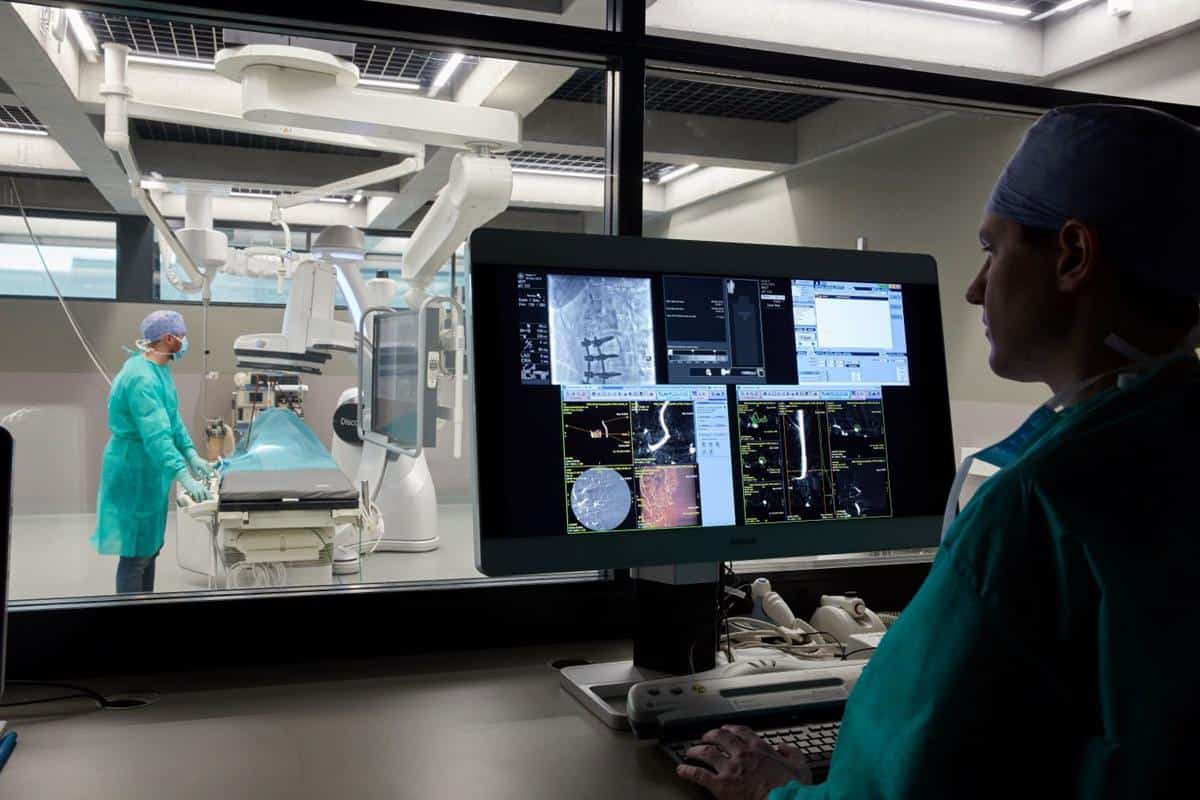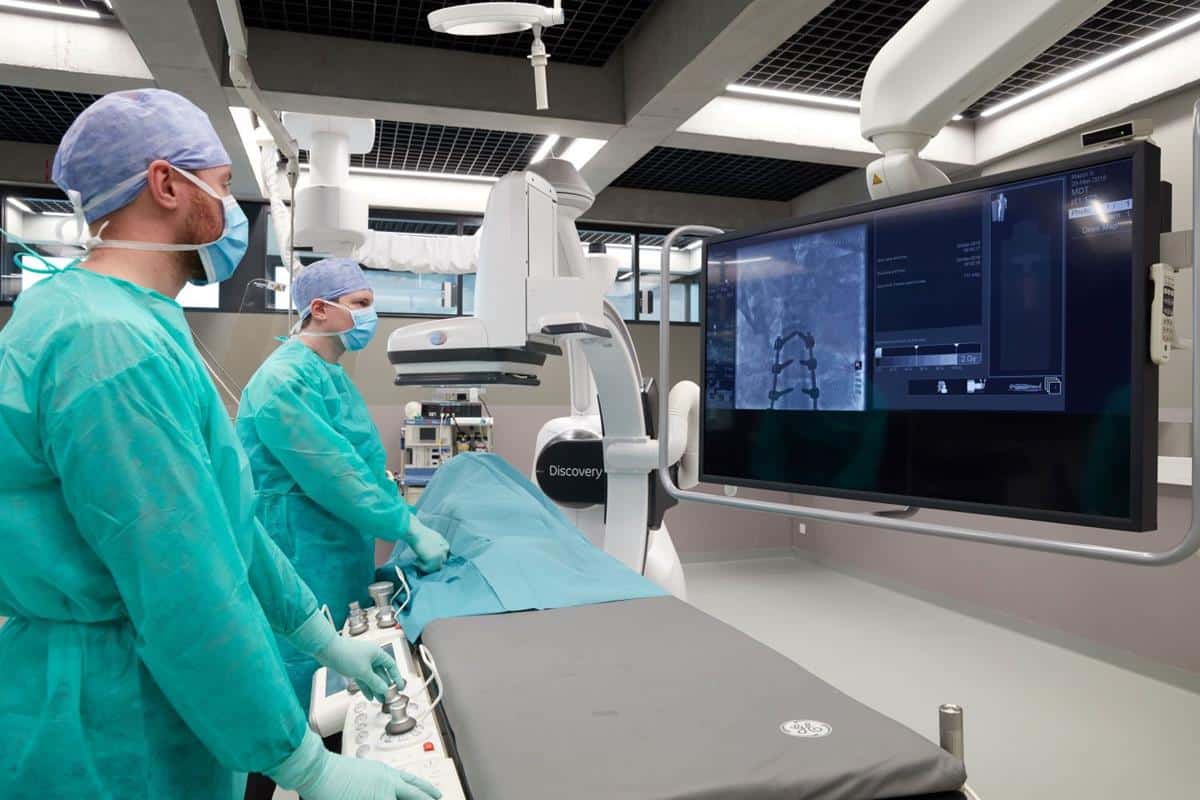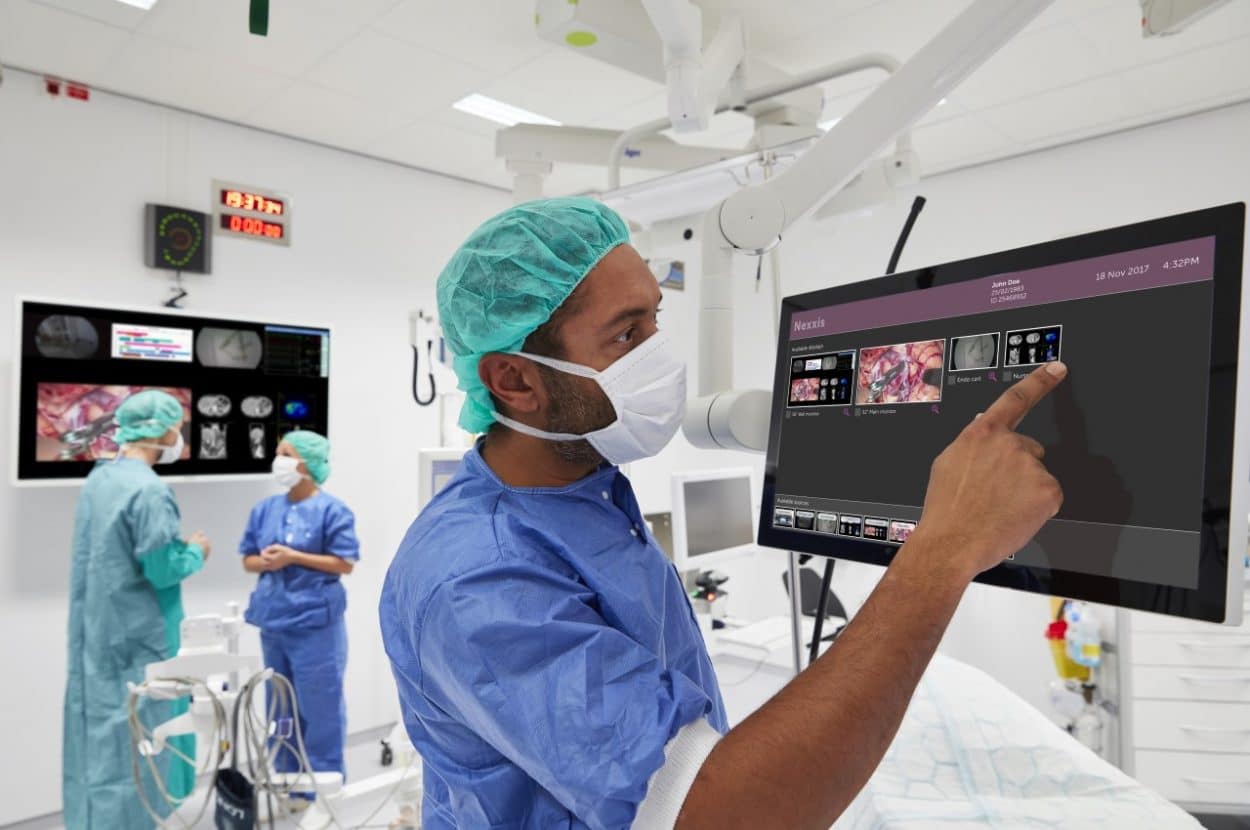Operating room (OR) technology is changing at a rapid pace. For many hospitals, keeping up with these changes is hard, and even more drastic changes can be expected in the next decade. And yet, the groundwork for these changes can be laid today. By adopting an OR-over-IP approach, hospitals will be able to implement many of the upcoming technologies that will shape the complex OR environment of the future more easily.
By Suren Mnatsakanyan, Healthcare Segment Marketing Lead at Barco.
Many years ago, adding a new technology or imaging modality in the operating room meant connecting devices like endoscopy cameras, computers, scanners and surgical displays through dedicated AV equipment. Today, the operating room is becoming increasingly digitized, allowing multiple devices and imaging systems to be connected over a standard IP network.
With this so-called OR-over-IP approach, surgical data, images and video can be easily shared, stored and displayed on any screen inside or outside the operating room. Integration over IP also makes it possible to centrally manage the multitude of imaging systems and devices and make the OR workflow much more streamlined.
A Future-Proof OR
The digital OR is no longer something nice to have. In fact, the OR-over-IP approach will be the necessary foundation for adopting a lot of innovative technologies, some of which have already reached the OR today, some of which will probably enter the OR on a larger scale in the future.
- 4K imaging allows surgeons to clearly see inside a patient and perform surgery with the highest precision.
- 3D imaging improves the visibility of the patient’s anatomy, and enhances surgical efficiency and accuracy in laparoscopic procedures with shorter operating times.
- Virtual and augmented reality will be used to train surgeons and clinicians, and help them acquire proficiency in complicated technologies much faster.
- Artificial intelligence will be able to help to establish diagnosis while the patient is still on the operating table, guide surgery and later treatment.

The Digital OR Offers Flexibility
In the past decade, many companies and organizations ramped up their digital efforts in order to overhaul their business processes and improve the customer experience. The same can be said of the OR. Just like in the business world, the OR is not becoming digital for digitization’s sake, but rather to reduce complexity, simplify workflows and increase efficiency and productivity.
In this sense, the OR-over-IP approach is already bearing fruit today for the OR staff of a growing number of hospitals worldwide.
- Reducing setup and turnover time: The productivity of surgical teams and the efficient use of the OR depends on easy and flexible scheduling of cases and on the time required for their preparation and technology setup. However, by bringing more technology into the OR, the setup and configuration before surgeries have become increasingly complex and time-consuming. Because it offers a standard architecture, the OR-over-IP approach simplifies installation and reduces set-up time in the OR.
- Streamlining treatment: An OR that is crammed with equipment – navigation devices, machine-controlled applications, PACS equipment, etc. significantly contributes to the stress levels of the OR staff. By running the OR technology over IP, the number of cables and devices can be reduced, which allows for a much cleaner and comfortable working environment, in which surgeons can make quick and accurate decisions.
- Reducing downtime due to technical maintenance: With an increasing number of devices and cables, the OR risks becoming a complex hodgepodge of technology that is hard to maintain. Time spent on technical maintenance is time that cannot be used for surgery. An IP-based OR platform can make the job of maintenance personnel a lot easier. By using unified fiber cabling that connects directly to the devices, cable clutter can be reduced and errors during maintenance can be avoided.

Flexibility Today and Tomorrow
Technology continuously evolves and therefore, the OR needs to be easily adaptable and interchangeable to meet future requirements. Its environment must be flexible enough to accommodate the most recent technologies, such as 4K and 3D imaging. IP-based video integration, or the so-called OR-over-IP, is an approach that will support this expansion of technologies well into the future.
But the OR-over-IP has already demonstrated its worth. In an environment where the patient’s stakes are so high and where every minute literally means money, digital technology can help improve the productivity and efficiency of today’s already highly skilled top OR professionals. The OR of today and of the future is one where conditions are created that allow surgeons to do their best work, by delivering highly accurate images and providing the most ergonomic working conditions.
Is your OR ready to go IP? Barco’s Nexxis video-over-IP platform will help you get the most out of your operating room.











